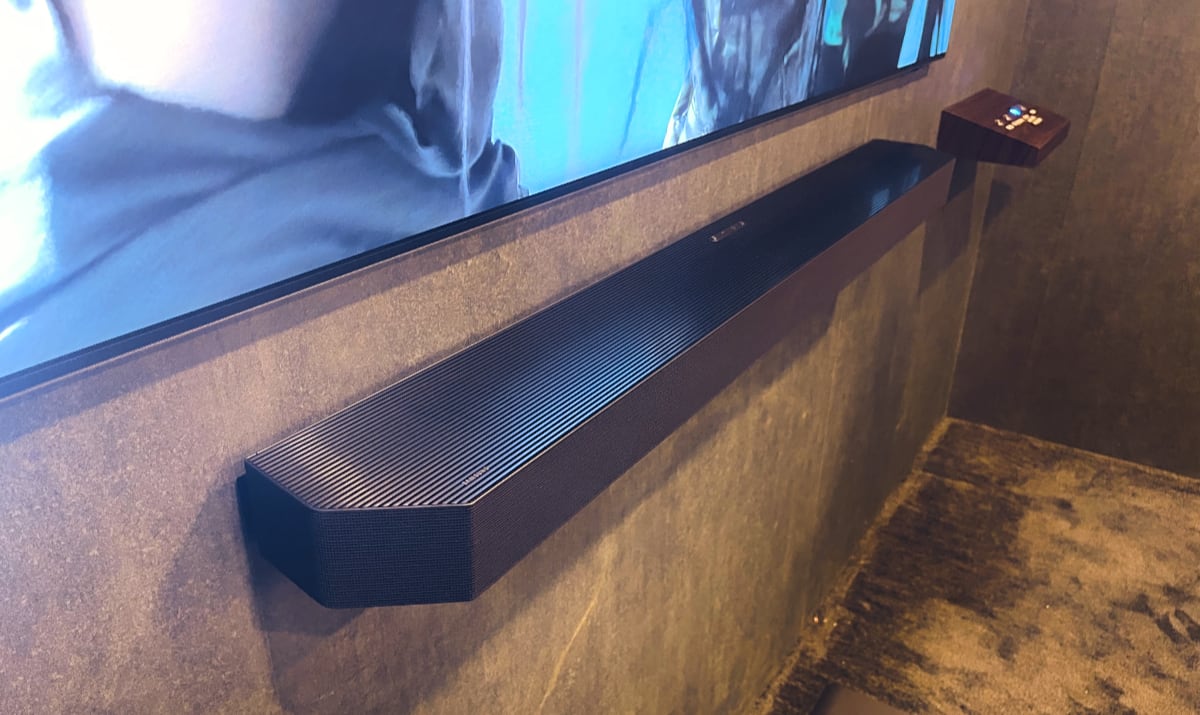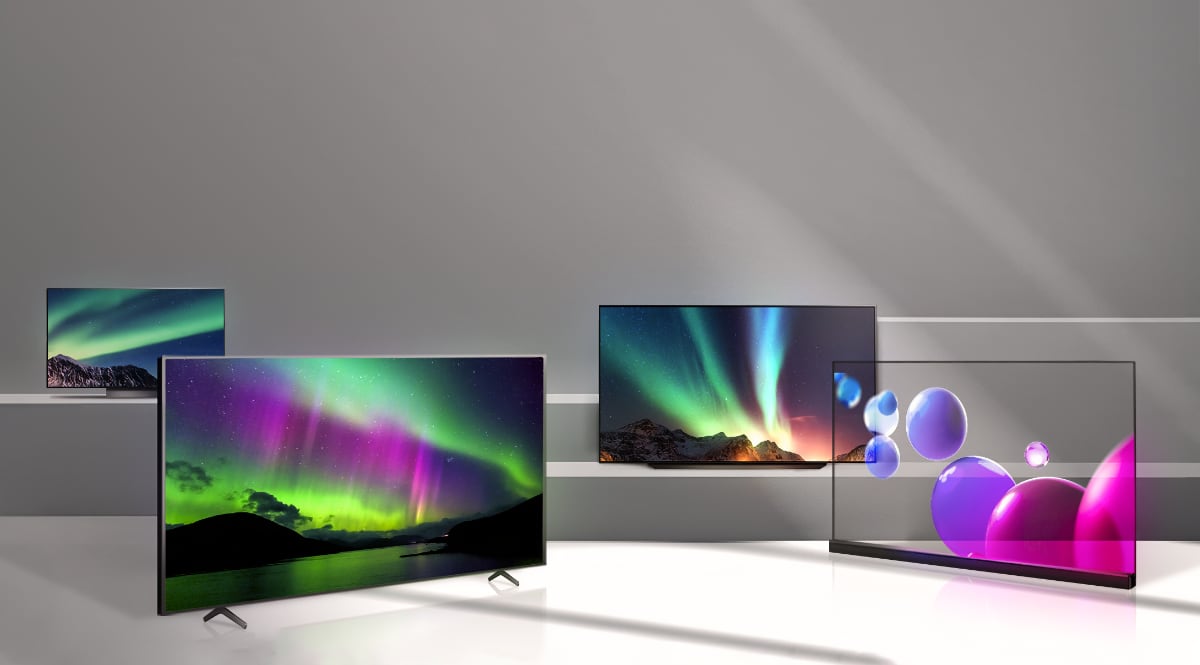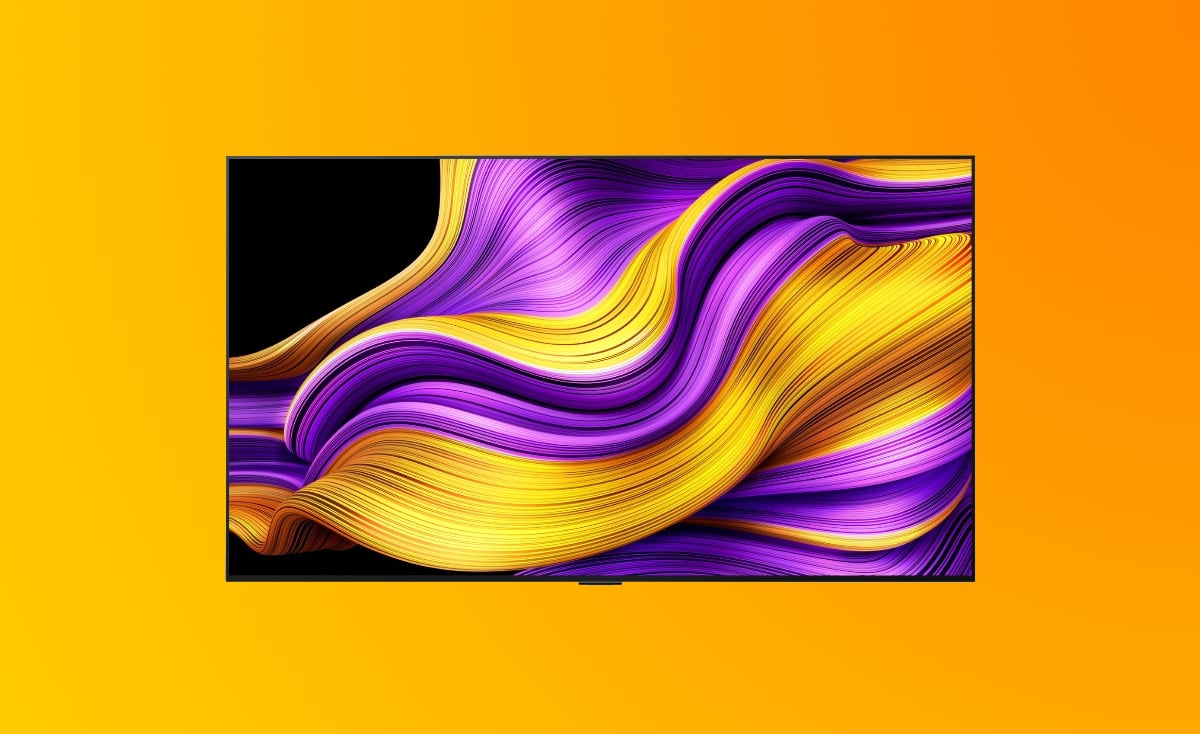Apple today unveiled its first two iPad Pro models with OLED, marking a transition away from traditional LCD panels to brighter, better, and thinner HDR-capable OLED panels.
For a few years, the company's largest iPad Pro has featured an improved LCD panel with miniLED local dimming, but it was always considered a stopgap measure until OLED panels were ready for the iPad.
Apple is now starting the transition away from conventional, contrast-poor LCD panels in its tablet computers, which is expected to significantly accelerate the adoption of OLED in IT products in general, according to multiple analysts.
Finally.

The 2024 iPad Pro is extremely thin, made possible by the OLED panel. Photo: Apple
Apple made the switch to OLED display technology in the iPhone with the iPhone X in 2017, while the Apple Watch has featured OLED screens since launch. The new Vision Pro headset is the first to feature extremely pixel-dense micro-OLED displays produced on wafers. Apple is also rumored to be planning a switch to OLED in its lineup of Mac computers.
Tandem OLED in iPad Pro
Apple is far from the first manufacturer to use OLED in tablets, but these are the first tablet OLED panels with a two-stack tandem structure. This means there are two emission layers to deliver higher brightness and longer lifetime.
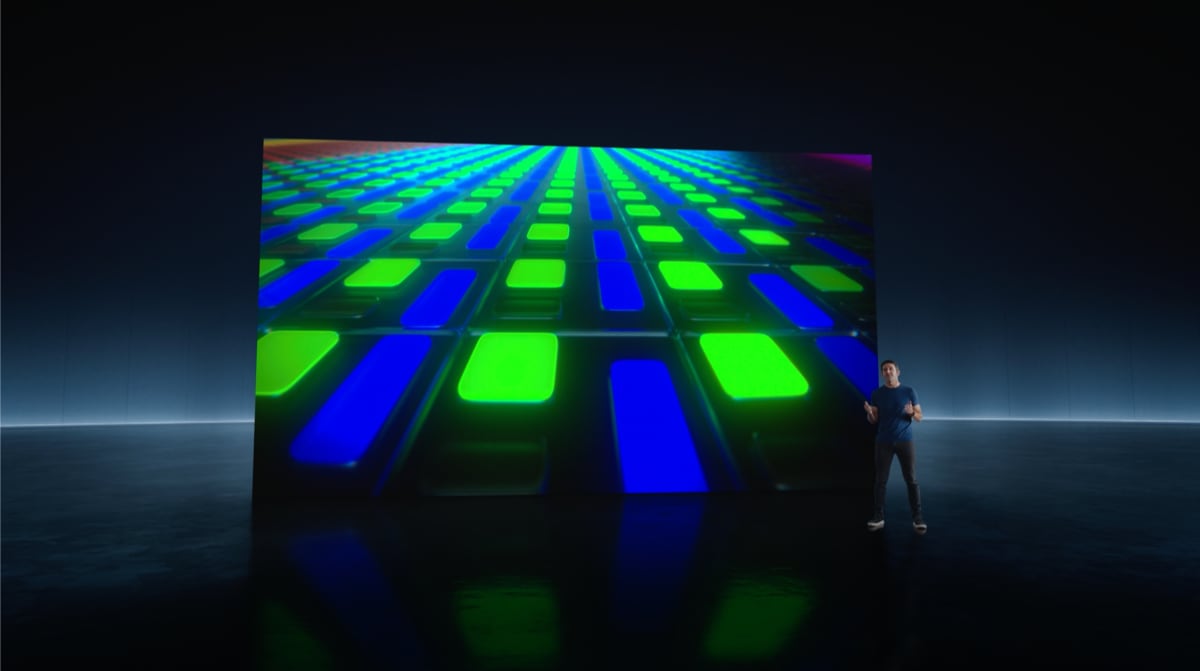
The pixel structure of the OLED display in the new iPad Pro
Apple refers to it as 'Tandem OLED' and said that the display delivers 1000 nits full-screen brightness for both HDR and SDR. Peak HDR brightness is 1600 nits, while true black is maintained for extremely high contrast. It also supports 10-120Hz adaptive refresh rate as part of the 'ProMotion' system.
The same display is found in both sizes of the new iPad Pro. There is also a nano-texture glass option for reduced glare. It is the "world's most advanced display", the company claimed. The Apple-commissioned and customized OLED panels in the two new iPad Pros are manufactured by LG Display and Samsung Display.
- "Both sizes feature the world’s most advanced display — a new breakthrough Ultra Retina XDR display with state-of-the-art tandem OLED technology — providing a remarkable visual experience," said Apple.
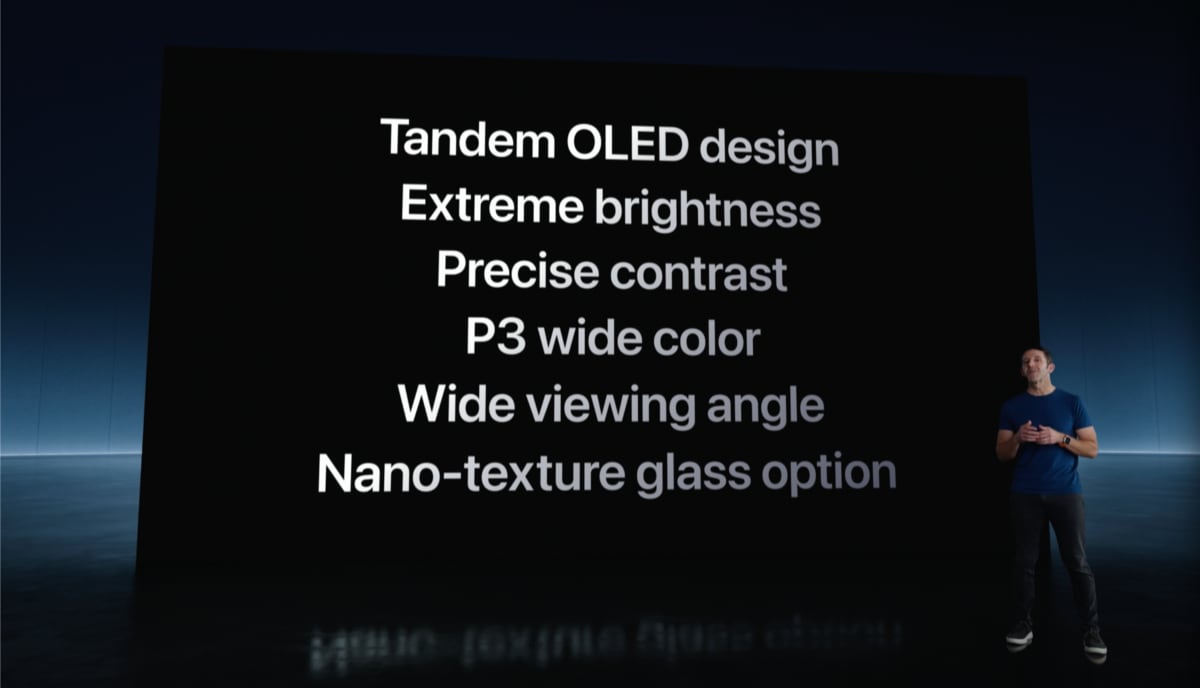
The introduction of OLED means that the iPad Pro is finally capable of true HDR, offering a wider dynamic range in luminance and colors.
While Apple offers an extensive catalog of 4K movies and series in HDR10, HDR10+, and Dolby Vision, the challenge will be to get productivity apps to embrace HDR as the new standard. This will partly require a larger percentage of the installed device base to feature HDR-capable displays, but it will also require Apple to transition more of its devices, including Mac and Studio monitors, to OLED.
First Apple devices with M4
Both new iPad Pros are powered by Apple's own M4 processor. They are the first Apple devices to feature M4.
It is a surprising development to see the second generation 3nm M4 chip in iPad Pro, as M3, M3 Pro and M3 Max were launched in October 2023.
- "M4 features an entirely new display engine to enable the precision, color, and brightness of the Ultra Retina XDR display. With a new CPU, a next-generation GPU that builds upon the GPU architecture debuted on M3, and the most powerful Neural Engine yet, the new iPad Pro is an outrageously powerful device for artificial intelligence," said Apple.
M4 includes a new Media Engine with support for AV1 video decoding.
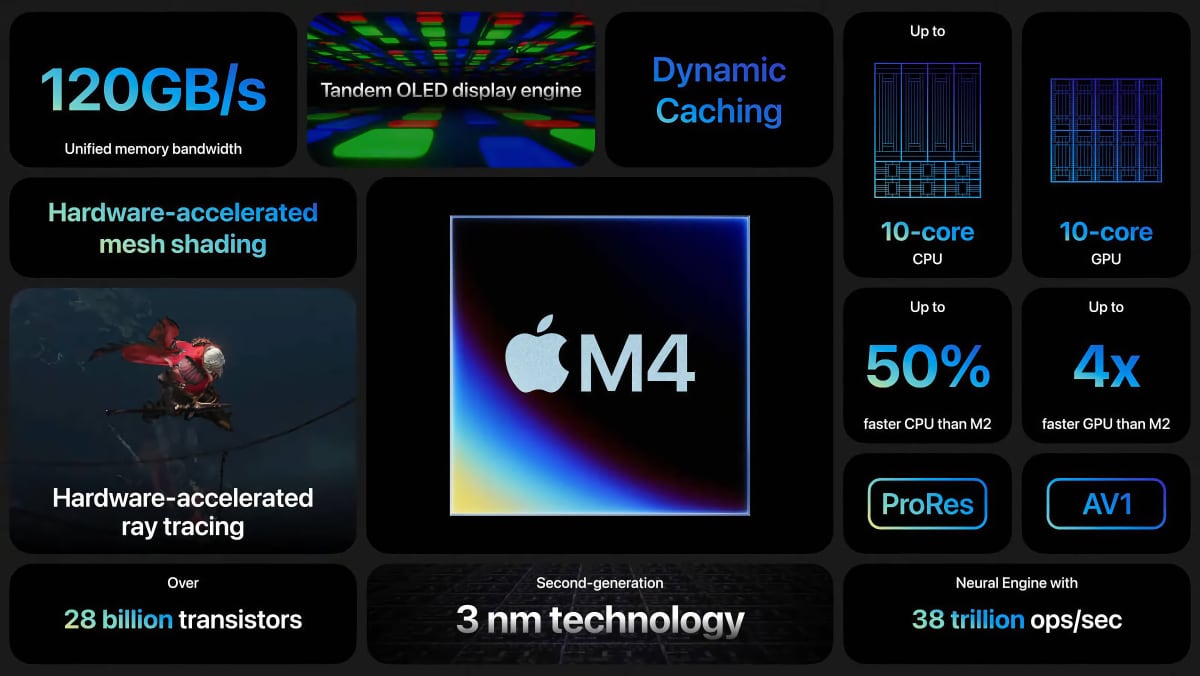
iPad Air still features LCD
The company also announced new 11 and 13-inch iPad Air models, which will both continue to use "Liquid Retina" LCD panels with edge-lit LED technology.
To go along with the upgraded tablets, Apple also announced the Apple Pencil Pro with haptic feedback. It also supports 'Find My' to help you find it when it is lost.
The new 11 and 13-inch iPad Pro models will be available in silver and black starting at $999 and $1299, respectively.
iPad Pro with OLED – specifications
| Capacity
- 256GB
- 512GB
- 1TB
- 2TB
Display:
- Ultra Retina XDR display
- Tandem OLED3
- 2420-by-1668-pixel resolution at 264 ppi (11-inch) / 2752-
by-2064-pixel resolution at 264 ppi (13-inch)
- ProMotion technology with adaptive refresh rates from 10Hz to 120Hz
- Wide color (P3)
- True Tone
- Fingerprint-resistant oleophobic coating
- Fully laminated
- Antireflective coating
- Nano-texture display glass option on 1TB and 2TB models
- SDR brightness: 1000 nits max
- XDR brightness: 1000 nits max full screen, 1600 nits peak (HDR content only)
- 2,000,000:1 contrast ratio
- Supports Apple Pencil Pro
- Supports Apple Pencil (USB‑C)
- Apple Pencil hover
Chip:
- Apple M4 chip
Models with 256GB or 512GB storage:
- 9-core CPU with 3 performance cores and 6 efficiency cores
- 10-core GPU
- Hardware-accelerated ray tracing
- 16-core Neural Engine
- 120GB/s memory bandwidth
- 8GB RAM
Models with 1TB or 2TB storage:
- 10-core CPU with 4 performance cores and 6 efficiency cores
- 10-core GPU
- Hardware-accelerated ray tracing
- 16-core Neural Engine
- 120GB/s memory bandwidth
- 16GB RAM
Media Engine
- Hardware-accelerated 8K H.264, HEVC, ProRes, and ProRes RAW
- Video decode engine
- Video encode engine
- ProRes encode and decode engine
- AV1 decode
Wireless:
- Wi‑Fi 6E (802.11ax) with 2x2 MIMO5
- Simultaneous dual band
- Bluetooth 5.3
Thunderbolt / USB 4 port with support for:
- Charging
- DisplayPort
- Thunderbolt 3 (up to 40Gb/s)
- USB 4 (up to 40Gb/s)
- USB 3 (up to 10Gb/s)
Display Support
- Supports full native resolution on the built-in display at millions of colors
- Supports one external display with up to 6K resolution at 60Hz
Thunderbolt 3 digital video output
- Native DisplayPort output over USB-C
- VGA, HDMI, DVI, and Thunderbolt 2 output supported using adapters (sold separately)10
Video mirroring
- Up to 4K AirPlay for mirroring, photos, and video out to Apple TV (2nd generation or later) or AirPlay‑enabled smart TV
- Video mirroring and video out support through USB-C Digital AV Multiport Adapter and USB-C VGA Multiport Adapter (adapters sold separately)10 |
FlatpanelsHD






